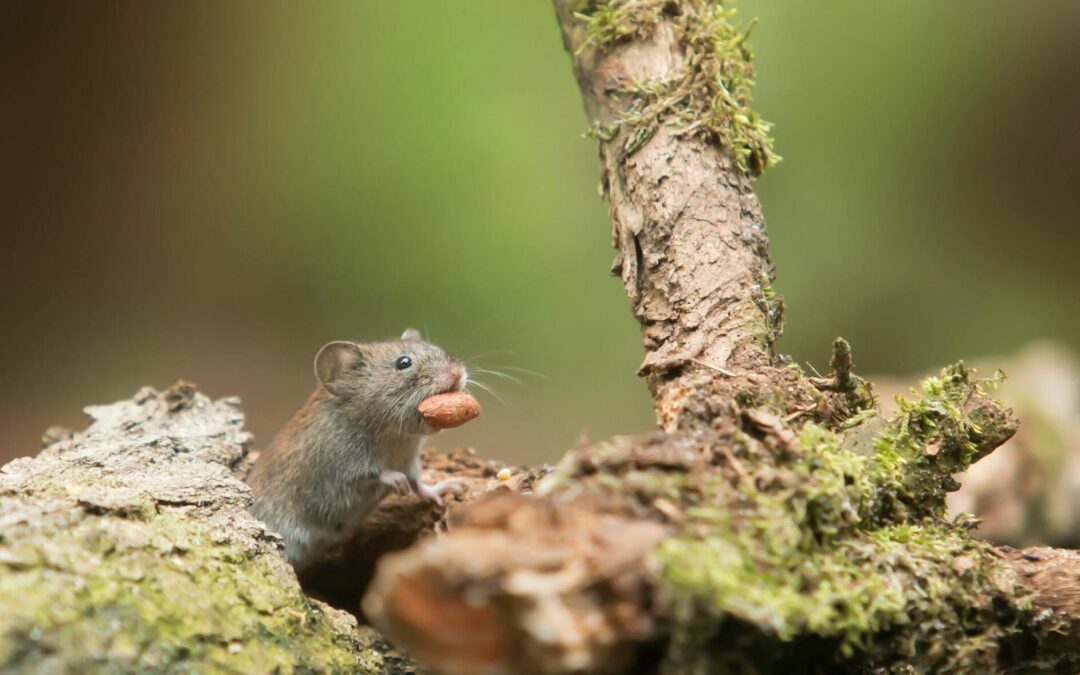If you’ve spotted a small rodent scurrying across your yard or home and you’re unsure whether it’s a chipmunk, mouse, or rat, you’re not alone. These critters can look similar at a glance, but their differences are clear when you know what to look for. This guide breaks down the unique traits of each species to help you accurately identify them.
Chipmunk
Appearance:
Chipmunks are small, striped rodents with reddish-brown fur and distinctive black and white lines running down their backs and faces.
Size:
Roughly 5–6 inches long, not including their tail.
Tail:
Bushy and expressive, often carried upright or curled over the back.
Behavior:
Unlike mice and rats, chipmunks are diurnal—active during the daylight hours. They’re skilled climbers and are well known for their cheek pouches used to gather and store food.
Habitat:
Found in woodlands, parks, and suburban areas with trees, shrubs, and ground cover.
Diet:
Eat mostly seeds, nuts, fruits, and insects.
Mouse (House Mouse)
Appearance:
House mice have smooth gray or brown fur, no stripes, and small bodies with prominent ears and eyes.
Size:
About 3–4 inches long, with a tail that’s roughly the same length as the body.
Tail:
Long, thin, and nearly hairless.
Behavior:
Mice are nocturnal, meaning they’re most active at night. They’re highly curious and known for squeezing through tiny gaps to enter homes.
Habitat:
Live in fields, homes, garages, and barns—anywhere with warmth and food.
Diet:
Omnivorous—consume grains, seeds, crumbs, and food scraps.
Rat (Norway or Brown Rat)
Appearance:
Rats are larger and bulkier than mice, with coarser fur in brown or gray shades.
Size:
Body length is typically 7–10 inches, plus a tail that may be slightly shorter or about equal in length.
Tail:
Thick, scaly, and hairless.
Behavior:
Rats are highly adaptable and mostly nocturnal. They’re strong swimmers and climbers, and are notorious for being destructive pests.
Habitat:
Often found in urban settings, including sewers, basements, fields, and garbage areas.
Diet:
Also omnivorous, feeding on grains, meat, garbage, and even pet food.
Comparison Summary Table
| Feature | Chipmunk | Mouse | Rat |
|---|---|---|---|
| Size | Small (5–6 in) | Smaller (3–4 in) | Large (7–10 in) |
| Stripes | Yes | No | No |
| Tail | Bushy | Long, thin | Thick, scaly |
| Activity | Diurnal (daytime) | Nocturnal | Nocturnal |
| Habitat | Forests, outdoors | Indoors/outdoors | Urban, garbage areas |
| Behavior | Food gatherer | Curious, fast | Strong, destructive |
Final Thoughts
Being able to distinguish between a chipmunk, a mouse, and a rat is helpful for wildlife management, pest control, or simply understanding your surroundings. While chipmunks are mostly harmless and stay outdoors, mice and rats can be unwelcome indoor guests and require intervention. If you need help identifying or managing rodent activity, Nature and Wildlife Solutions is here to guide you.
